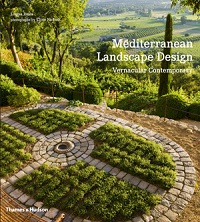
For those interested in the gardens of Provence or in gardening anywhere along the northern shore of the Mediterranean, the books of Louisa Jones may already be very familiar. She writes in both French and English from her base in southern France. What I learned recently is that she lived in Seattle for many years, teaching literature at the University of Washington.
The Miller Library has seven of the books by this author, mostly on gardens in France, including French vegetable and kitchen gardens. The most recent, “Mediterranean Landscape Design,” expands her scope into neighboring countries and focuses on the human influence on the landscape, including many examples that may seem natural, but instead are the results of centuries of human activities with the land.
I found the chapter on clipped greenery particularly enlightening, as I’ve never fully appreciated the formal gardens I’ve seen in Mediterranean countries. Jones explains that in this region, the many native, broadleaf evergreens “…are already mounded by wind, drought, sheep, fire and frost.” Farmers prune these plants further for windbreaks. “When architects and sculptors then organize them into shapes and masses, topiary and parterres, they are not choosing artifice over nature, the tame versus the wild, but merely going one step further than the farmers into human intervention.”
Throughout the book there are many other examples of gardening with nature rather than trying to subdue it. This approach tends to deemphasize flowers, which are often fleeting in this climate, and makes “…no distinction between ornamental and productive gardening.” The author emphasizes this point as she thinks that “…Northern European cultures have effectively separated the two.”
Excerpted from the Spring 2016 Arboretum Bulletin.